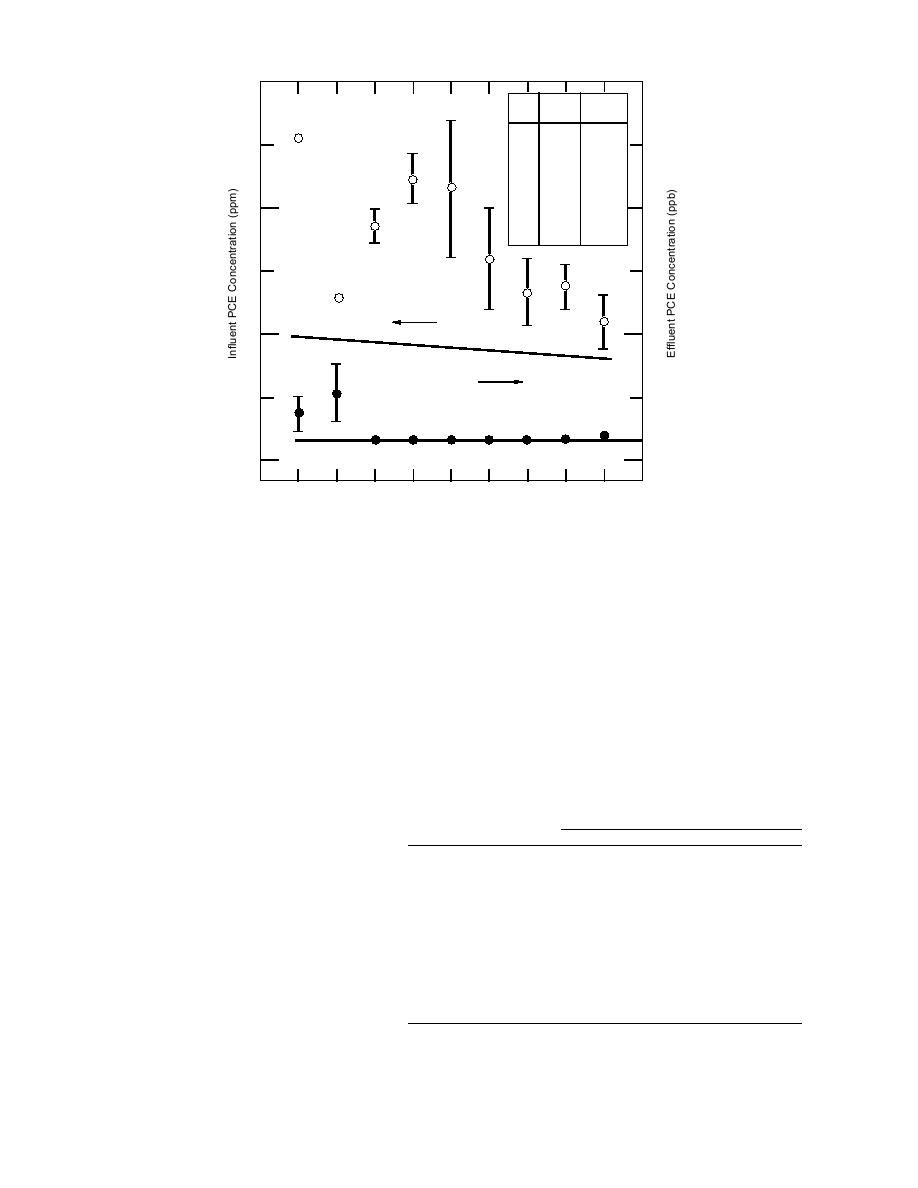
12
12
Trial
Temp. Flow
(C) (L/min)
No.
1
8.9
75.7
2
22.2
18.9
3
22.2
18.9
4
8.9
75.7
5
8.9
18.9
6
22.2
75.9
8
8
7
15.6
18.9
8
15.6
75.7
9
22.2
18.9
Influent
4
4
Effluent
PQL = 0.543 ppb
0
0
1
2
3
4
5
6
7
8
9
Experimental Trials
Figure 4. PCE pre-treatment and post-treatment concentrations for all
experimental trials.
creasing influent sample variabilities of trials 7, 8
while effluent concentrations varied over 5-ppb
and 9. Effluent sample variability is consistently
and 2-ppb ranges (respectively). This trend sug-
low after the initial equilibrium trials (trials 1, 2).
gests that VOC removal was independent of influ-
The percentages of VOCs removed during all
ent concentration. Mass transfer of VOCs was
main trials are listed in Table 4. Student's t-test
therefore controlled by the contaminants' proper-
comparisons showed no significant difference be-
ties and not the concentration gradient between
tween mean removals at all factor level combina-
liquid and gas phases, as expected, because of the
tions, at a 95% confidence interval. The efficiency
high Henry's law constants and relatively low
solubility of TCE and PCE in water. An-
other trend observed was the decrease of
Table 4. VOC removals (% removed) by ShallowTray air
influent TCE and PCE concentrations
stripping achieved at three liquid temperatures and two
over time, which is most likely a result of
liquid flow rates.
the treated water being recycled to the
ice well where the contaminant concen-
Liquid temperature
8.89C
15.56C
22.2C
trations for subsequent trials could have
Flow rate
VOC
been slightly diluted. The higher than av-
TCE
99.9978%
99.9942%
99.9984%
erage influent sample variabilities for tri-
(99.9918%)
als 5 and 6 resulted from freeze/thaw
18.9 L/min
PCE
99.9935%
99.9927%
99.993%
effects on some process water exposed to
overnight temperatures below 0C (all
(99.982%)
unit processes other than the equaliza-
TCE
99.9936%
99.9946%
99.9947%
tion tank and ShallowTray stripper were
(99.9918%)
outdoors). The treatment process proce-
75.7 L/min
PCE
99.9942%
99.9893%
99.9914%
dures were modified to reduce the
(99.9865%)
freeze/thaw effects. The effectiveness of
the modifications is apparent in the de-
( ) duplicate trial results
8



 Previous Page
Previous Page
